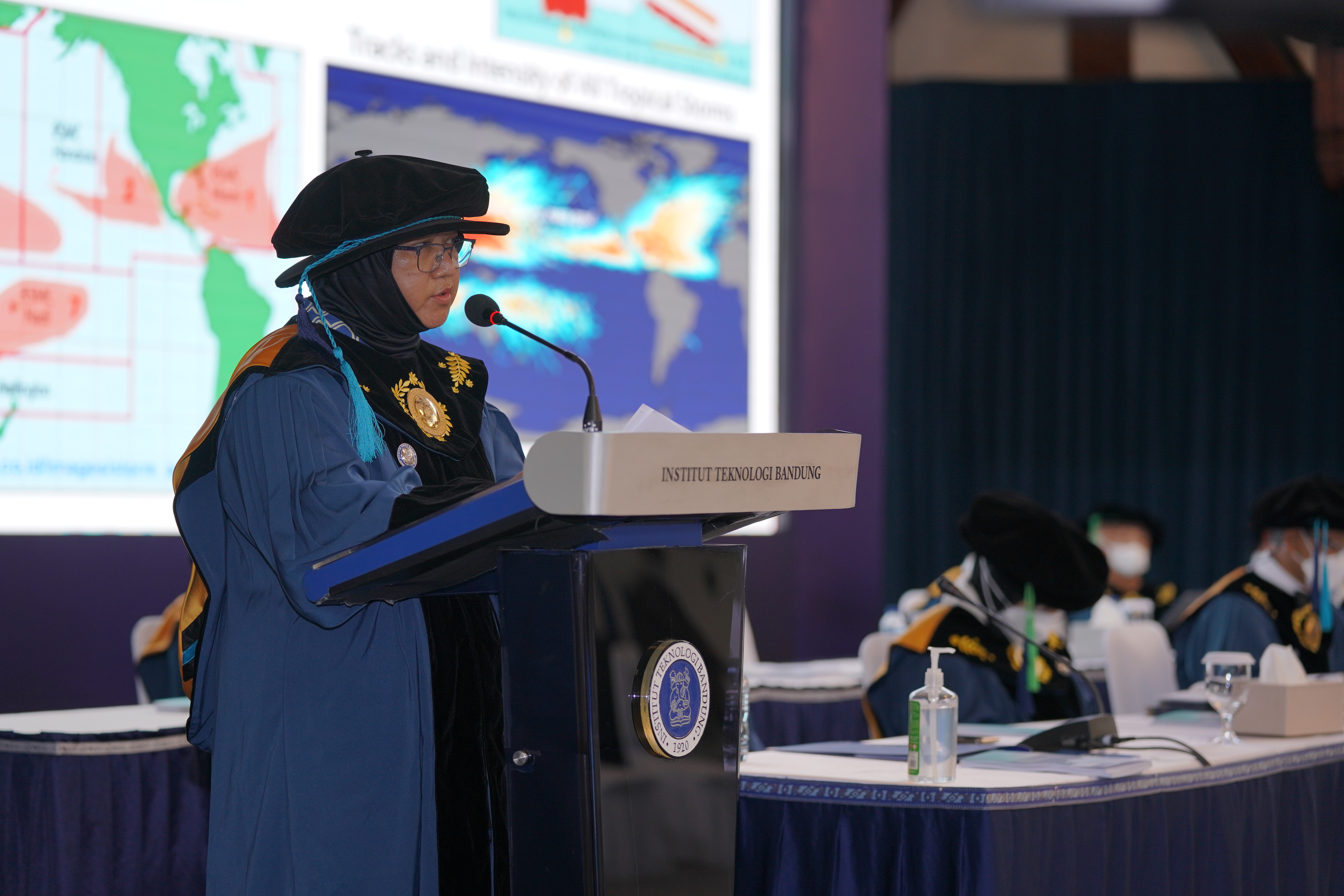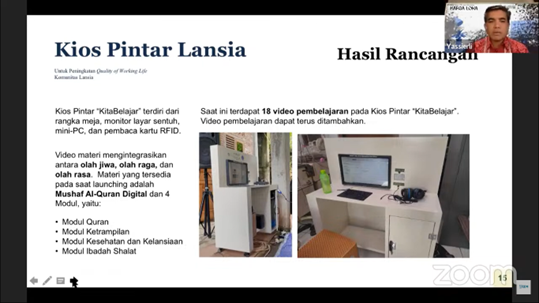Prof. Nining Sari Ningsih Scientific Oration: Indonesian Sea Waves Characteristics and Their Use
By Adi Permana
Editor Adi Permana

BANDUNG, itb.ac.id — The Full Professor of ITB’s Faculty of Earth Sciences and Technology (FEST) Prof. Dr. Eng. Nining Sari Ningsih, M.S., delivered her scientific oration in the Institut Teknologi Bandung Professor Forum on Saturday (17/9/2022). Prof. Nining selected the topic of “Sea Waves Characteristics in Indonesian Waters: Disaster Mitigation and Energy Resource Potential”.
Prof. Nining is a lecturer of the Undergraduate Program in Oceanography ITB who attained her Full Professor title on 1 May 2022 after 30 years of service. Her involvement in the world of research leave no room for doubts, with 67 papers published on journals and proceedings, both national and international from 2009-2022. This achievement allowed Prof. Ningsih to receive her accolade of Institut Teknologi Bandung Research Field Award during the 63rd Dies Natalis ITB in 2022.
Identifying Sea Waves Characteristics in Indonesia
Indonesia is a famous maritime country with its extending seas across the nation. Behind its oceans’ beauty, lie dormant terrorizing disasters in the form of tsunami and tropical cyclone high waves. This is caused by Indonesia’s proximity to the formation area and tropical tracks occurring in the northern and southern waters.
Prof. Nining conducted a study of sea waves characteristics in Indonesia as a part of disaster mitigation effort and renewable energy application. The comprehension of these characteristics supported seafaring activities of 11 Fishery Management Areas (FMA) and seafaring safety information of Indonesian Archipelagic Sea Lanes (IASL) and Sea Lane of Communication (SloC) Malaka.
Statistically there are six locations in Indonesia with the tallest sea waves maxima (> 2.5 meter), ranked from the highest to lowest are the South of Java, West of Sumatra, Natuna Seas, North of Papua, Arafura Seas, and Sulawesi Seas.
Based on the World Meteorological Organization (WMO)’s standard, the maximum height can act as a reference to determine whether taller waves are dangerous for small ships. However, the percentage probability of tall waves in every FMA will be analyzed further through calculating the probability of accident, which showed that FMAs located deeper on the Indonesian waters have lower waves compared to those facing the open seas or oceans.
Analysis of these tall waves also considered the tropical cyclone condition in Indonesia. Through 42 years (1979-2020), accumulated data detected tropical cyclone occurrence areas in Indonesian waters. There are 4 areas: area 1 and 2 (image 3) in the Earth’s Northern Hemisphere (ENH) as well as area 3 and 4 (image 3) in the Earth’s Southern Hemisphere (ESH). Research concluded that tropical cyclones tend to occur in the ENH, with a percentage of 60,5% for area 2, 18% for area 4, 11% for area 3 and 10% for area 1. This is because tropical cyclones are formed above the open seas with warmer surface level temperatures, where the area has a general exposure to the day arc. ENH’s tropical cyclones emerged throughout the months of May and November, whereas ESH’s appeared from December to the next April.
Sea Waves as Renewable Energy Resource
Aside from disaster mitigation, sea waves as an environmentally-friendly and renewable energy can be converted into electricity with a terminator type web energy converter (WEC). Presently, there are four locations in Indonesia deemed strategic for WEC installation: South Pagai Island, Banten, Baron in Yogyakarta, and Jember.
In order to realize blue economy in the marine sector as well as developing digital economic efficiency in the industrial revolution 4.0 era and society 5.0, the Oceanographic Research Group improved the efficiency and dissemination of the study’s results, for example through the use of machine learning to predict sea waves height on a number of points in Indonesian waters such as the Belawan Waters, representing the Karawang Strait region, the Masalembo Waters, representing the inner seas, and the Baron Waters, representing the open seas.
Currently, Prof. Nining and her team is in the process of applying data science for the creation of a dashboard monitoring, thus study results related to the sea waves characteristics in the FMA, SloC Malaka routes, and IASL can be easily accessed by stakeholders and users.
The sea waves dynamics never was a mere disaster, it is also a potential energy resource. However, support from various parties including the general public, academicians, and the government is vital to optimize sea waves utilization and to reduce disaster risk in Indonesia.
Reporter: Pravito Septadenova Dwi Ananta (Geological Engineering, 2019)
Translator: Firzana Aisya (Bioengineering, 2021)

.jpg)
.png)
.jpg)
.jpg)
.jpg)



.jpg)